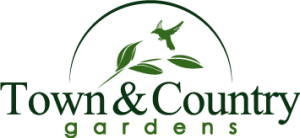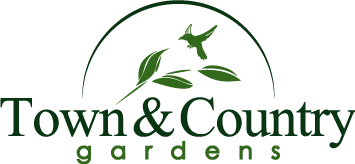July Checklist
July Checklist
July Gardening Check List & Tips
Vegetables
- Give vegetables a side dressing of T&C Fruit & Flower Food monthly. Side dress corn with T&C Premium Lawn Food or Ammonium Sulfate. Feed tomatoes with Save-a-Tree monthly.
- Vegetables will stay fresher if you harvest them in the morning. Clean them as quickly as possible and refrigerate (except tomatoes which should not be refrigerated for best flavor).
- Harvest corn when the husk is tight over the ear and the silks are dried to a dark brown.
- Hot days mean greater water needs. Wilting of lettuce can make it bitter. Wilting of tomatoes can result in Blossom End Rot. Water deeply and avoid evening watering.
- Spray tomato plants with Fertilome Yield Booster to help prevent Blossom End Rot.
- If staking tomato plants, tie new growth weekly. Remove all suckers (the new shoots that develop where each leaf meets the stem.)
- Watch for Colorado Potato Beetle on potatoes. Spray with Fertilome Triple Action.
- Try to avoid wetting the leaves of your plants by using soaker hoses or drip irrigation. If you sprinkle irrigate, do it early in the morning. Nighttime sprinkling can encourage disease.
- For a fall harvest, plant broccoli and carrots in mid July; lettuce and spinach in mid August.
- Pinch off the flower buds of onions to direct energy to the developing bulb.
- Remove spent vegetable plants. If they are free of insects and disease, compost the plants; otherwise dispose of them so they don’t infect your plants and soil.
Roses
- Continue to fertilize roses through July. Roses are heavy feeders. Roses love Save-a-Tree and Fertilome Rose Food. Don’t feed after July 31 to allow them to “harden off” for winter.
- Prevent rose diseases like powdery mildew and black spot from taking hold by spraying with Fertilome Systemic Fungicide before the problem appears.
- Remove old, spent rose blooms after they fade, cutting the stem just above the uppermost 5-leaflet node on the stem.
Flowers
- Reapply mulch where it has been blown or pulled away. Try to maintain a 1 to 2” layer.
- Stake tall-blooming flowers like gladiola and delphinium to keep the flowers upright.
- Plant fall-blooming perennials like asters, mums, and fall sedum for fall color.
- Remove yellowing foliage from tulips, daffodils, and other spring blooming bulbs.
- Check the water needs for hanging baskets daily. The wind and sun dry them quickly.
- Feed flowers regularly. Monthly with T&C Fruit & Flower Food or Save-a-Tree, semi-monthly with Fertilome Water Soluble 20-20-20 (weekly for pots and hanging baskets).
- Heat damaged pansies can be replace with heat-loving portulaca, salvia, marigold, gazania.
- Divide overcrowded irises after they have bloomed (or failed to bloom). Dig up the whole clump, discard old rhizomes which have no leaves. Replant the good ones after improving the soil with Soil Enhancer and working in a little super phosphate into the soil.
Lawns
- If your lawn needs a “pick-me-up” apply T&C Premium Lawn Food at half the normal rate.
- Don’t spray lawn weeds (or any weed killer) if temperature is likely to exceed 85 degrees.
- Set your mower on a higher setting to encourage deeper roots. The longer grass will keep the ground cooler and require less water.
- Water deeply and no more often than every other day, less frequently if possible.
- Apply Hi-Yield Dimension in mid August to prevent germination of Poa annua grass.
Trees & Shrubs
- Container grown trees and shrubs can be planted all summer. Planting early in the morning or In the cool of the evening reduces the stress on both you and the plant.
- In addition to lawn watering, water large trees monthly by placing a sprinkler beneath the tree that reaches as wide as the branches. Run until you’ve put down 2” of water.
Fruit
- Place bird netting over your berries to help keep birds and squirrels out of your fruit crops.
- Keep berries well watered while they are producing fruit for maximum berry size.
- Continue to spray apples with Spinosad according to label directions to prevent worms.
- Prop up fruit laden branches with boards or poles to keep branches from breaking.
General
- Turn compost piles regularly. Speed decomposition with Hi-Yield Compost Maker.
- Be sure your hummingbird feeders are filled and ready for the “hummers” as they migrate.
- If you suspect spider mites on a plant do this simple test. Take a piece of white paper and shake the branch onto the paper and examine the paper to see if anything is moving. If mites are present stop by Town & Country for current recommendations.
- Place wasp/hornet traps to minimize the pesky pests. Replace attractant as needed.
- Spray around the foundation of your home with Bifenthrin to keep hobo spiders from coming inside.
Always read and follow label directions when using any garden chemical or fertilizer.


